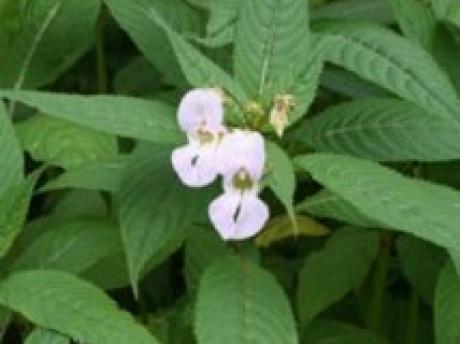Description
This is an attractive annual plant that grows up to around 3 metres tall. It has dark green spear-shaped leaves around 10cm long and pink flowers. Spread by seed, it has exploding seed pods that spread the seed in the immediate vicinity. The plant is closely associated with watercourses and damp woodlands, and the seeds are often carried by river to new areas.
This annual plant grows to 3 metres high and is spread exclusively by seed. The seed pods explode when mature, scattering the small seeds up to 7 metres from the parent plant. The plants grow in dense stands along the banks of rivers and effectively suppress any native grasses and herbaceous plants. The balsam dies back in autumn, exposing the now bare bank-sides to erosive winter flows.
Problems associated with this species include:
- Loss of biodiversity as native species are shaded out
- Increased erosion as it stops plant growth beneath it in the summer and dies back in winter leaving bare river banks open to erosion
- Reduced access to riverbanks as it can grow quickly in dense stands across footpaths
